This article was co-authored by Eric Martinez. Eric Martinez is a Registered Clinical Exercise Physiologist and the Vice President of Infinity Sports Institute in Miami, Florida. With over a decade of experience, Eric specializes in clinical exercise physiology, human optimization, and sports science. He works with professional and Olympic athletes as well as high-risk patients. Eric holds an MS in Exercise Physiology from Barry University and is a Registered Clinical Exercise Physiologists in the State of Florida. Eric holds 15 different certifications in specialties such as strength and conditioning, injury prevention, neuro biomechanics, and Kinesio taping. He trains hundreds of coaches in Nero and Clinical Physiology certifications.
There are 20 references cited in this article, which can be found at the bottom of the page.
wikiHow marks an article as reader-approved once it receives enough positive feedback. In this case, 100% of readers who voted found the article helpful, earning it our reader-approved status.
This article has been viewed 123,845 times.
Obesity is usually a lifestyle disease, though it may be related to other medical conditions. Obesity is most common amongst adults but can affect the elderly, teens, and even children. Obesity is not only a cosmetic concern – it increases your risk for ailments like heart disease, stroke, high blood pressure, diabetes, cancers, back pain, sleep apnea, mental health problems, and more.[1] Obesity can, in many cases, be overcome! If you are keen to overcome obesity or help someone else who is obese, consider working with a professional towards your goal and altering your diet, activity level, and lifestyle choices.
Steps
Eating for Weight Loss
-
1Eat fewer calories. You and your doctor should discuss how many calories per day you should try to eat. The average goal is 1,200 to 1,500 calories per day for women, and 1,500 to 1,800 calories per day for men.[2] Your goal is to burn more calories than you eat – that's the only way to safely and effectively lose weight naturally.
- It may help to keep a food journal. Record what you eat, how many calories you're getting from your foods, and how many servings you're eating. Remember that if the food label lists an item as 100 calories but you're eating three times the serving size, that's 300 calories.
-
2Eat smaller portions. When possible, try to eat five to six small, healthy meals a day instead of the conventional three larger meals a day. You may feel more satiated, and you'll be less likely to overeat.[3] If this doesn't fit with your schedule, focus on limiting your portion sizes during meals. Use a smaller plate, and try to fill 2/3 of your plate with vegetables, fruits, or whole grains.Advertisement
-
3Choose foods with low energy density. Limit calories without losing nutritional value by choosing the right foods to feel full while eating less. Some foods, like sweets and junk food, have high energy density, i.e. they contain a lot of calories in a small portion. You can eat larger servings of foods with lower energy density, like fruits and vegetables, and still limit your calories.[4]
-
4Base your meals on fruits, vegetables, and whole grains. Fresh fruits and vegetables are low in fat and calories, and contain lots of nutrients. Opt for fresh or frozen over canned – canned fruits and veggies can contain lots of salt and additives.[5] Make the bulk of your meals with whole grains – choose whole wheat bread, rice, pasta, oats, and quinoa.
- Avoid white bread and other refined sugars.
- Eat a variety of vegetables – dark leafy greens, red and yellow veggies, peas and beans, and starches.Aim to eat 5-9 servings of fruits and vegetables daily.
-
5Replace bad fats in your diet with good fats. Bad fats are saturated fats. These are found in red meat, butter, lard, shortening, and bacon. They are solid at room temperature, and they can raise your cholesterol in your blood. Limit these in your diet as much as possible.
- Cook with olive oil instead of butter; olive oil contains good fats that are better for you.
- Switch red meat like beef and pork with poultry and fish; fatty fish like salmon, mackerel, and herring are good healthy options.
- Choose low-fat or fat-free dairy.
- Get protein from unsalted nuts, seeds, soy, and beans.
-
6Cut out junk food. Junk food like chips, cookies, soda, and other prepackaged items from the snack aisle contain lots of fat and sugar and quickly add to your calorie count. Limit these items in your diet as much as possible. Try to replace sugary, high-fat desserts with fresh fruit or popsicles; snack on vegetables, hummus, or nuts rather than salty snack foods.[6]
- Limit eating takeout or fast food to once a week at most.
-
7Cut down on sweets. Sugars add lots of calories to your daily diet, and can contribute to health problems like diabetes. Try not to eat many sweets, candies, or baked desserts. Avoid sugary drinks like soda, energy drinks, sweetened coffee and tea, and flavored water.[7]
- Invigorate regular water with natural flavors like citrus slices, mint, or cucumber.
-
8Limit your alcohol intake. Alcohol contains a lot of sugar and extra calories. Other than the health effects of alcohol, consuming it regularly can make it more difficult to lose weight. Limit yourself to “moderate” alcohol intake – one glass a day for women, and two for men.
- If you don't drink alcohol, don't start.
-
9Avoid fad and crash diets. Any diet that promises immediate or drastic weight loss is probably either unhealthy, unrealistic, or both. Most fad or crash diets might help you lose weight quickly, but you're almost guaranteed to put the weight back on – and in the mean time, you might be doing your body harm. The best way to lose weight is gradually and consistently to improve your health and keep the weight off.[8]
Getting Active
-
1Start slowly. Even a 10 minute walk every day can improve your health.[9] If you've been sedentary or overweight for a while, you may have to start slowly. Set small goals for yourself and build on them, such as, “I will take a 15 minute walk every day this week,” and, “I will increase my activity to 30 minutes, 5 days per week starting by the end of the month.” Once you start to consistently get exercise it will become a habit, making it easier to accomplish.
-
2Strive to get at least 150 minutes of aerobic exercise per week. In order to lose weight when you're obese, you need to partake in at least 150 minutes of moderate-intensity exercise each week. Try to create a workout schedule that gets you moving for 30 minutes a day, at least 5 days a week.[10] It's okay to start smaller and gradually work up to this goal.[11]
- For more extreme results, aim for 300 minutes per week of exercise.
- What counts as a “moderate-intensity aerobic workout” varies and can be quite creative: Walk briskly (fast enough to break a sweat), bike, swim, play tennis, dance, do workout videos at home – anything that gets your heart rate and breathing rate up and makes you sweat.
- Consult your healthcare professional about an appropriate exercise regime, especially if you have medical conditions or are over age 40 (for women) or 50 (for men).
-
3Keep moving to burn extra calories. Other than setting aside specific time to exercise, there are easy ways to burn calories throughout your day. Walk somewhere instead of driving, park far away from your destination, work in the garden, take your dog or a neighbor's dog for frequent walks, play music and get energetic when you're cleaning the house, or take the stairs instead of the elevator.[12]
- Turn off the TV! People who watch fewer than 2 hours of TV a day tend to gain less weight than those who watch more.[13] Take a walk outside after dinner instead of sitting in front of the TV. If you can't miss your favorite program, do light to moderate exercises while you watch such as squats, crunches, or jogging in place.
Cultivating Healthy Habits
-
1Set realistic goals. A great thing about weight loss is that even small changes can improve your overall health. A normal initial goal for treating obesity is a “modest weight loss” – usually 3-5% of your total weight.[14] For instance, if you weigh 250 lbs (114kg), you can set an initial goal of losing 7.5-12.5 lbs (3.5-5.7 kg) to start improving your health.
- Losing even 5% of your body weight can reduce your risk for developing diabetes, and it may even help improve liver function.
- The more weight you lose, the bigger the health benefits – but set small, attainable goals in order to stay positive and dedicated.
-
2Reward yourself when you meet your goals. You don't have to be perfect – it's okay to treat yourself occasionally. If you meet a weight-loss or exercise goal, reward yourself. Ideally, do something fun such as seeing that movie that's in theatres or taking a weekend trip; but if it's a food treat you're craving, go for it. One fattening meal won't impede your success, and it's important to appreciate your hard work.
-
3Keep track of your BMI. Body mass index, or BMI, is defined by comparing your body weight in kgs to your height in meters. It's usually a good measure of your amount of body fat. A BMI of 18-25 is considered normal, and obesity is classified into ranges of severity. Keep track of your BMI with your doctor to monitor your progress, and set health-conscious goals. BMI is categorized as follows:[15]
- 40 and higher: Extreme/morbid obesity (class III obesity)
- 35-39.9: Class II obesity
- 30-34.9: Class I obesity
- 25-29.9: Overweight
- 18.5-24.9: Normal/healthy
-
4Get 8 hours of sleep every night. When you don't sleep enough or sleep too much, your body releases a hormone that can affect your appetite and make you crave carbohydrates. Maintain a healthy and consistent sleep schedule and get as close to 7-9 hours of sleep as you can. Try the following:[16]
- Set regular times to go to bed and wake up.
- Avoid napping during the day.
- Leave your bedroom for sleeping – don't watch TV or do other activities in bed.
- Sleep in a cool, dark space.
- Avoid caffeine after 4pm, or earlier if you're sensitive to caffeine.
- Create a relaxing ritual before bed, like taking a hot bath or having a cup of (decaffeinated) tea.
-
5Seek out supportive people. Surround yourself with friends and family who encourage your goal of overcoming obesity and maintaining a healthy weight.[17] Invite others to cook healthy meals with you. Find a “workout buddy,” and encourage each other to exercise regularly.
-
6Join The National Weight Control Registry. The National Weight Control Registry (NWCR) is an ongoing database and investigation of people who have successfully lost weight and who are continuing to do so. This program will ask you to record your eating, health, and exercise habits by occasionally sending you questionnaires. This is a great way to help researchers understand weight loss while helping you keep track of your own habits.
- To join, you must be 18 years old. You need to have lost at least 30 pounds and to have kept 30 pounds off for at least a year.
- Questionnaires are sent out every two months.
Working With a Professional
-
1Work closely with your doctor. The majority of cases of obesity are caused by diet and lifestyle choices. You gain weight when you take in more calories than you burn through daily activities – either due to having a sedentary lifestyle, eating an unhealthy diet, or both.[18] Your doctor can help you to overcome obesity by educating you about diet and lifestyle changes, helping you to make a meal plan or exercise regimen that's right for you, and referring you to other helpful professionals. You and your doctor can work to overcome your obesity as a team.
- It's also important to see your doctor regularly to monitor for and treat other health conditions affected by obesity, such as diabetes, high cholesterol, and high blood pressure.
- Ask your doctor if any medications you take may make it harder to lose weight. Some medicines like antidepressants, antipsychotics, anticonvulsants, steroids, and beta-blockers (a type of heart medicine) can cause weight gain.
- Consult with your doctor before starting any big changes in your diet or exercise regimen. Discuss any health conditions you have, and any medications you take, so you can approach your goals safely and effectively.
-
2Collaborate with a nutritionist. Nutritionists and dietitians are professionals trained to help you eat healthy in the way that's best for you. Work with one to create a meal plan, and to ensure you get all the vitamins and minerals you need while eating to lose weight.
- Often, your doctor can refer you to a nutritionist or dietitian. Tell your doctor something like, “I'd like extra help creating a healthy diet. Can you suggest someone to help me?”
-
3Get a personal trainer. Consider hiring a personal trainer if you have the means to do so. Personal trainers can teach you how to exercise properly and safely, and can be very motivational. They can teach you appropriate form for exercises and help you to develop a consistent plan with gradually increasing levels of difficulty.[19]
- If a personal trainer is out of your price range, try joining a class at the gym or YMCA. You won't get as much individualized attention, but you'll still have camaraderie and support from others.
-
4Take a team-approach. Sometimes the best way to overcome obesity is to work with a care team. Depending on your needs and circumstances, your doctor may have you work with a mental health professional or an obesity specialist.[20] Remember that obesity is a disorder that can be treated and conquered with the right help.
-
5Discuss weight-loss medications with your care provider. Weight-loss medications do not replace a healthy diet and exercise, but in some situations they can be a helpful addition. You may qualify for weight-loss medications if your BMI is over 30, or is over 27 but you have related health issues. These medications don't work for everyone, and there's a risk you will regain some of the weight when you stop the medications – but your doctor will help you know if a medication is right for you.[21] Some common weight-loss medications include:
- Orlistat (Xenical), phentermine and topiramate (Qsymia), lorcaserin (Belviq), liraglutide (Saxenda), and buproprion/naltrexone (Contrave).
- Take all medications as directed by your doctor.
- Orlistat (Xenical), phentermine and topiramate (Qsymia), lorcaserin (Belviq), liraglutide (Saxenda), and buproprion/naltrexone (Contrave).
-
6Consider weight-loss surgery. Weight-loss surgery, or bariatric surgery, limits how much food you can eat and/or how you digest and absorb food. You can have good results, but there are also risks. Surgeries can have consequences in how you absorb some vitamins and minerals that you need, so always continue to work with your healthcare provider after your surgery. There are several kinds of surgery to consider, and your doctor can help you choose one that's right for you. You're only eligible for surgery if you meet all of these criteria:[22]
- You've unsuccessfully tried other methods to lose weight
- You have a BMI of 40 or higher or 35-39.9 with other related health problems
- You're committed to also making diet and lifestyle changes during and after your use of medicine
-
7Treat any medical conditions causing your obesity. Rarely, obesity is caused by genetic or medical conditions. Discuss your health history and family history with your doctor to rule out any medical causes for your weight concerns. Talk to your doctor about getting tested if you have a family history of any of these conditions, or if you have other signs or symptoms of these conditions (though this is not a comprehensive list):[23]
- Hypothyroidism (low thyroid function): some common symptoms include fatigue, feeling cold a lot, dry skin, weight gain, changes in your menstrual cycle, thin/fine hair, and depression.
- Cushing's syndrome (too much cortisol in your body): symptoms include a fatty hump between your shoulder blades, changes in your menstrual cycle, a wide, round face, and purplish stretch marks.
- Prader-Willi syndrome: those born with this disorder feel hunger and a need to eat constantly.
Warnings
- Consult your doctor or other medical professional before embarking on any dramatic lifestyle change.⧼thumbs_response⧽
References
- ↑ https://medlineplus.gov/ency/patientinstructions/000348.htm
- ↑ https://www.health.harvard.edu/heart-health/weight-loss-fewer-calories-in-more-calories-out
- ↑ https://www.nhs.uk/live-well/healthy-weight/managing-your-weight/12-tips-to-help-you-lose-weight/
- ↑ https://www.nhs.uk/live-well/healthy-weight/managing-your-weight/12-tips-to-help-you-lose-weight/
- ↑ https://www.hsph.harvard.edu/nutritionsource/healthy-eating-plate/
- ↑ https://www.nih.gov/news-events/nih-research-matters/genes-junk-food-weight
- ↑ http://www.mayoclinic.org/healthy-lifestyle/womens-health/in-depth/menopause-weight-gain/art-20046058?pg=2
- ↑ https://www.betterhealth.vic.gov.au/health/healthyliving/weight-loss-and-fad-diets
- ↑ http://www.mayoclinic.org/diseases-conditions/obesity/basics/preparing-for-your-appointment/con-20014834
- ↑ https://www.heart.org/en/healthy-living/fitness/fitness-basics/aha-recs-for-physical-activity-in-adults
- ↑ Eric Martinez. Clinical Performance Specialist & Registered Clinical Exercise Physiologist. Expert Interview. 18 May 2021.
- ↑ https://www.nhs.uk/live-well/healthy-weight/managing-your-weight/12-tips-to-help-you-lose-weight/
- ↑ https://bmcpublichealth.biomedcentral.com/articles/10.1186/s12889-016-3931-y
- ↑ https://www.cdc.gov/healthyweight/losing_weight/index.html
- ↑ https://www.nhlbi.nih.gov/health/educational/lose_wt/BMI/bmicalc.htm
- ↑ https://www.agingcare.com/articles/sleep-and-aging-133153.htm
- ↑ https://www.apa.org/topics/obesity/support
- ↑ http://www.mayoclinic.org/diseases-conditions/obesity/basics/causes/con-20014834
- ↑ Eric Martinez. Clinical Performance Specialist & Registered Clinical Exercise Physiologist. Expert Interview. 18 May 2021.
- ↑ http://www.mayoclinic.org/diseases-conditions/obesity/basics/treatment/con-20014834
- ↑ https://www.niddk.nih.gov/health-information/weight-management/prescription-medications-treat-overweight-obesity
- ↑ https://medlineplus.gov/weightlosssurgery.html
- ↑ https://www.nichd.nih.gov/health/topics/obesity/conditioninfo/cause



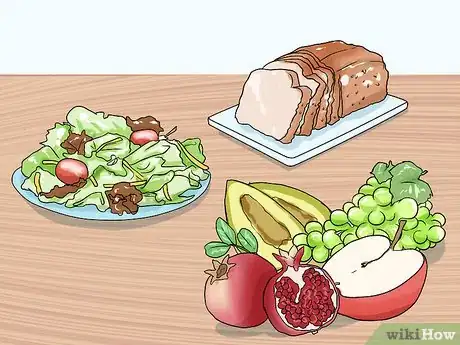

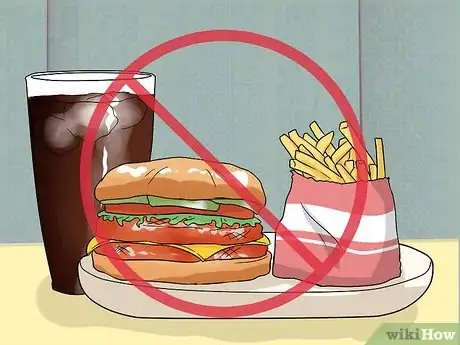
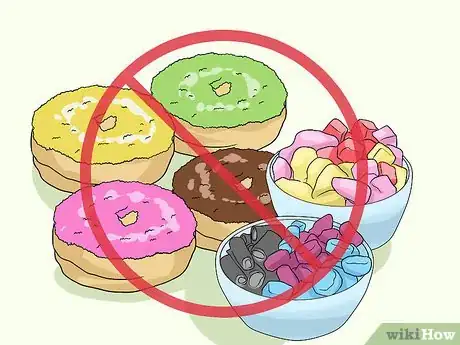


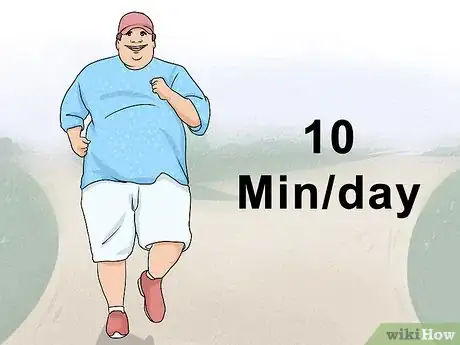



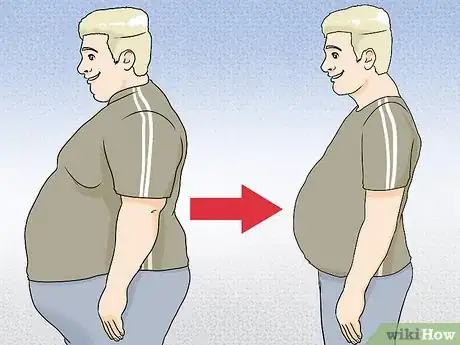

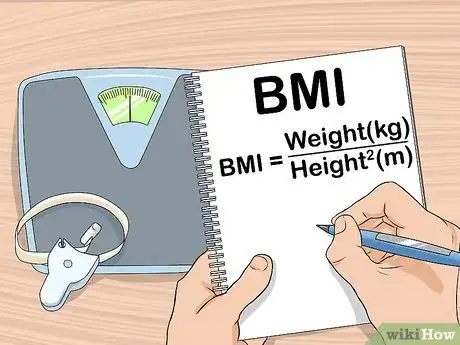









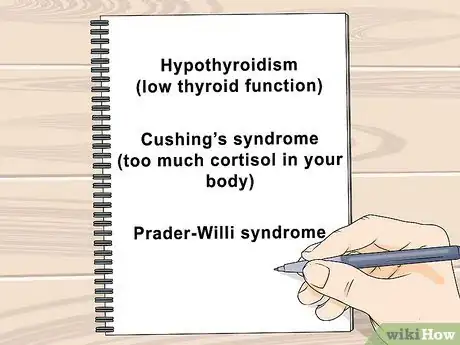


-Step-14-Version-3.webp)

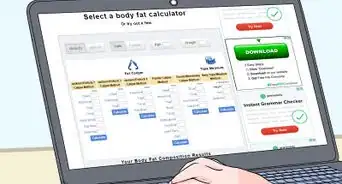




















-Step-14-Version-3.webp)




































Medical Disclaimer
The content of this article is not intended to be a substitute for professional medical advice, examination, diagnosis, or treatment. You should always contact your doctor or other qualified healthcare professional before starting, changing, or stopping any kind of health treatment.
Read More...